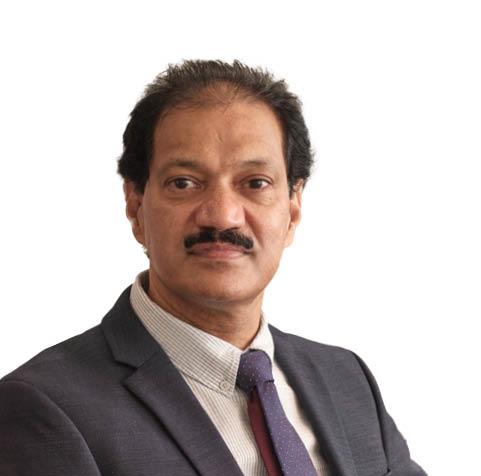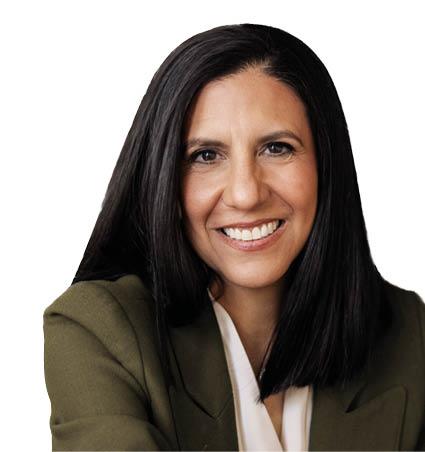18 June 2025

From digital inclusion to fintech fusion, Africa’s MVNOs are carving out a bold new future for wireless communications…
In the race to connect Africa’s billion-plus population, a quiet revolution is reshaping the continent’s telecom terrain — one that doesn’t involve building towers or laying cables. Mobile Virtual Network Operators (MVNOs) are stepping up as agile disruptors, digital enablers, and vital partners in delivering inclusive, innovative, and cost-effective communication services.

Satya Mekala,
Wireless Technology Labs
The impact of MVNOs is starting to ripple through the markets — from bustling cities to the most remote corners of the continent. And they’re doing it without owning the traditional infrastructure that mobile network operators (MNOs) have long controlled.
Instead, MVNOs are leveraging unused network capacity, bundling mobile access with financial services, and deploying cutting-edge tech like eSIM, AI, and cloud-native platforms to reach populations that mainstream telcos often overlook.
Africa: fertile ground for MVNO growth
Unlike in Europe or North America, where MVNOs often emerge in saturated markets to undercut on price or provide boutique customer service, Africa’s MVNOs are answering a more fundamental call: connectivity as a catalyst for empowerment.
“The rise of MVNOs in Africa is largely driven by the increasing population and demand for inclusive connectivity, underserved niche markets, and innovative digital services. Affordable smartphones, rising internet penetration, and government-backed initiatives for universal access are strong enablers in this growth trajectory,” explains Engr. Morenikeji Aniye, CEO of Hotspot Networks.
“Africa’s MVNOs growth is driven by the need to extend services to previously unconnected or underserved segments — particularly in rural or low-income areas,” confirms Jeegar Swaly, Co-founder and VP of APAC & Africa, floLIVE. “The growing interest from non-telco entities (banks, brands, fintechs, etc.) reflects a broader shift toward bundling mobile connectivity with digital services.”
Africa is home to the youngest and one of the fastest-growing populations in the world. It also has a complex mix of high urban growth and vast rural areas with limited infrastructure. This duality is giving rise to MVNOs tailored for both the digitally ambitious and the digitally forgotten.
Moreover, “regulators across Africa are actively opening markets to innovative MVNOs, recognizing their role in expanding connectivity and increasing competition. In South Africa, for example, MNOs are beginning to view MVNOs as strategic partners to help monetize excess network capacity. Similarly, in Nigeria, higher-tier MVNOs (Tier 4 & 5) have been granted rural licenses, enabling them to invest in radio infrastructure and engage in revenue-sharing agreements with MNOs,” says Satya Mekala, CEO of Wireless Technology Labs (WTL). “Given Africa’s price-sensitive market, MVNOs have significant opportunities to offer low-cost communication services bundled with essential financial, educational, and sector-specific solutions. By integrating these value-added services, MVNOs can position themselves as compelling alternatives to traditional MNOs, driving greater adoption and connectivity across the continent.
According to Danielle Rios, Acting CEO of Totogi, the data speaks volumes: “Nigeria’s Communications Commission recently awarded 40+ MVNO licenses across five tiers, demonstrating strong regulatory commitment to this model. South Africa has seen similar momentum, with companies like TelkomONE, Rain, and Virgin Mobile pioneering the MVNO market and paving the way for newer entrants. This isn’t just a Nigerian or South African phenomenon — it’s part of a continent-wide recognition that traditional MNO-only markets aren’t serving all potential customers effectively.”
Enabling Africa’s MVNO uprising
Africa’s connectivity challenges are forcing MVNOs to get creative — not just in business models, but also in their technology stack.
With public cloud infrastructure now available across the continent, African MVNOs can build on a fundamentally different technology stack with three critical components, namely public cloud elasticity, cloud-native BSS solutions, and AI-powered operations.
“This technology foundation allows African MVNOs to achieve what was previously impossible: world-class customer experiences on modest budgets. The infrastructure model isn’t about owning assets but orchestrating them intelligently through cloud-enabled platforms — perfect for markets where ARPU is low and competition is fierce,” claims Rios.
According to Aniye, shared infrastructure models such as tower sharing, Network-as-a-Service (NaaS), and satellite backhauls are critical for MVNO viability: “cloud-native platforms allow MVNOs to scale quickly, reduce costs, and innovate without heavy capital expenditure. The use of virtualized core networks and open APIs also facilitates better integration with MNOs and service providers, creating a flexible, plug-and-play ecosystem.”
Further, “Africa’s leadership in mobile financial services presents a unique advantage for MVNOs. By integrating mobile wallets, microloans, and insurance through partnerships with digital financial platforms, MVNOs can differentiate their offerings and create added value beyond basic connectivity,” adds Mekala.

Engr. Morenikeji
Aniye, Hotspot
Network Limited
“From the infrastructure perspective, IaaS will work well in some countries in Africa and not so well in others,” notes Seshan Krishnamurti, Vice President - Sales, CovalenseDigital. “Besides power and data centre infrastructure, cultural aspects of behaviour, own vs. rent, etc. will influence short-term decision-making.”
But perhaps no technology has democratized access faster than the eSIM, which Gregory Gundelfinger, CEO of Telna, states is “tailor-made for this rapidly changing environment. Even people living in remote areas can easily download a SIM card. There are no physical logistics required — activation is done digitally.”
This becomes crucial in regions where postal systems are spotty, retail infrastructure is weak, and the digital divide is as much about distribution as it is about affordability.
MVNOs are also capitalizing on intelligent network selection. According to Swaly, Africa’s telecom environment is highly fragmented, spanning regions with limited 2G coverage to urban areas adopting 4G and early-stage 5G. Supporting MVNO growth in such diverse conditions requires adaptable, scalable, and cost-efficient solutions.
“No single mobile network operator provides complete nationwide coverage across African countries,” shares Swaly. “To ensure reliable connectivity, MVNOs must enable multi-network access with dynamic network selection and Intelligent IMSI switching to connect to the strongest local signal. By enabling dynamic IMSI and network selection, MVNOs can offer seamless, regulatory-compliant, high-availability services across Africa.”
A shift from competition to collaboration
The telecom world hasn’t always been cozy with outsiders, but the mood is shifting. Across Africa, MNOs are increasingly realizing the strategic value of partnering with MVNOs rather than competing with them.
“In today’s environment, there is much more of the ‘Big brother MNO’ to ‘little brother’ MVNO which is perceptible,” says Krishnamurti. “However, the nature of business transformation and the flattening ARPUs in standard consumer services, business models relating to multiple supply side partners, reseller channels are growing in a big way. Many operators are looking to create a much more agile, market-sensitive reseller channel, while they focus on ramping up the infrastructure, security, scale and solutioning/product side more.”
“Currently in Nigeria we have less than 50 licensed MVNOs and we hope to see support from MNOs as we see in most African countries where there is a shift from competition to collaboration,” shares Gundelfinger. “The MNOs are increasingly viewing MVNOs as strategic partners to expand reach, optimize unused capacity, and cater to segmented markets. MNOs are becoming more enthusiastic about the idea of partnering with MVNOs to explore digital and eSIM-enabled solutions. These collaborations allow MNOs to tap into innovative business models that bundle connectivity with value-added services.”
From white-label launches to revenue-sharing deals, the partnership models are getting smarter: “wholesale agreements, white-label solutions, managed services, and fintech collaborations — these are all win-win models in Africa,” says Mekala.
“The most promising trend is MNOs shifting from viewing their networks solely as consumer products to seeing them as platforms that become more valuable with each new service provider,” says Rios. “This platform thinking transforms MVNOs from risky ventures into low-risk innovation opportunities, allowing MNOs to support diverse experiments in the market without betting heavily on any single approach.”
Examples abound: Cell C partners with FNB Connect and me&you Mobile in South Africa; MTN collaborates with IoT-focused MVNOs for agriculture and fleet services; and Equitel in Kenya merges mobile banking with connectivity through Airtel.
Yet, challenges remain: “MVNOs operating across multiple countries face a significant hurdle: the need to integrate separately with each MNO,” highlights Swaly. “It results in a fragmented model that is technically complex, time-consuming, and costly. A growing number of MVNOs are being launched by non-telco players such as banks, retailers, and fintechs. These organizations leverage their existing customer bases to offer bundled digital and mobile services, but they too encounter scaling challenges when expanding beyond a single market.”
To address these challenges and foster smoother partnerships, Swaly reports that several business models have emerged as particularly effective:
Pay-as-you-grow models that reduce upfront investment and align costs with growth.
White-label solutions, allowing brands to quickly enter the market under their own name with minimal infrastructure.
Managed service models, where MVNEs or MNOs handle technical and operational aspects for the MVNO.
Value-added service bundles tailored to niche segments — for example, including low-cost international calls to specific countries for migrant workers.
Krishnamurti adds that the MVNE insulates the MVNO from the complexities of network integration and performance while offering the tools to customise value propositions (product innovation, commercial order management, pricing, etc.) and create a brand presence as a network service provider.
“The MVNE also does the aggregation and offers wholesale pricing,” notes Krishnamurti. “The Digital BSS/SaaS BSS allows MVNOs and even small ISPs aspiring to move into the MVNO/Integrated Digital Service Provider space the freedom to create a unique experience linked to their brand.”
Policy plays a pivotal role
No conversation about MVNOs is complete without addressing the regulators who shape the sandbox.
“Regulatory frameworks in Africa are evolving to support this dynamic environment. Progressive policies that promote digital identity, spectrum sharing, and network interoperability are critical,” shares Gundelfinger. “Policymakers can further nurture a sustainable MVNO ecosystem by encouraging transparency, fostering competitive practices, and simplifying licensing processes. This supportive regulatory landscape is essential for unleashing the full potential of eSIM-enabled MVNOs.”
“Though there’s a long way to go, regulatory advancements are gradually shaping a competitive MVNO landscape, with countries like Nigeria, South Africa, and Kenya leading the way,” says Mekala.

Jeegar Swaly, floLIVE
Each country has addressed this differently. Nigeria NCC’s MVNO Licensing Framework (2022) introduced five tiers, ranging from resellers (Tier 1) to full-service MVNOs with infrastructure investment (Tier 5). Higher-tier MVNOs can deploy their own radio networks in underserved areas and share revenue with MNOs. Meanwhile, South Africa’s ICASA has encouraged MVNO growth by requiring MNOs like Cell C to open their networks, enabling brands like FNB Connect and Mr. Price Mobile to enter the market. Finally, Kenya’s CA has supported MVNOs like Equitel, which combines mobile banking and telecom services, while Rwanda’s telecom framework encourages infrastructure sharing and has licensed MVNOs like KTRN to enhance connectivity.
Aniye warns that “more needs to be done to lower entry barriers, enforce fair wholesale pricing, and ensure transparent interconnect agreements. Policymakers can accelerate MVNO adoption by encouraging infrastructure sharing, providing spectrum access incentives, and supporting innovation hubs focused on rural connectivity.”
“Across Africa, the regulatory landscape is highly fragmented. While some countries have proactive MVNO frameworks, others lack MVNO-specific licensing or have unclear policies on issues like wholesale access terms, numbering, data localization, and permanent roaming,” agrees Swaly. “One major gap is the lack of distinction between human (retail) and machine (IoT) connectivity. In countries with strict KYC regulations — where each SIM must be registered to an individual — IoT deployments (e.g., smart metering) face operational and compliance challenges, as the SIM user is not always the owner.”
Data sovereignty and roaming regulations also present significant roadblocks, particularly for MVNOs looking to scale across borders or offer cross-border IoT services.
“To support a more competitive and sustainable MVNO ecosystem, policymakers should prioritize the creation of clear, tiered licensing frameworks that lower barriers to entry,” explains Swaly. “Enforcing fair and transparent wholesale access agreements, encouraging infrastructure sharing, and harmonizing regional regulations would enable more players to enter the market and scale across borders. Aligning MVNO policy with broader goals — such as digital inclusion, financial access, and IoT adoption — can help drive innovation and unlock the full potential of MVNOs to serve underserved populations and niche use cases across Africa.”
What’s next: a virtual tsunami
Over the next few years, MVNOs in Africa will evolve from basic resellers to full-service digital operators, offering everything from eSIM provisioning to AI-driven customer engagement.
“Technologies like 5G and edge computing will unlock new verticals such as smart agriculture, remote healthcare, and IoT-based logistics. Cloud-native infrastructure will empower nimble MVNOs to compete effectively, while AI will optimize network performance, user personalization, and fraud prevention, creating a smarter, more inclusive telecom ecosystem, predicts Aniye.
Meanwhile, Mekala envisions a future packed with mobile finance and IoT: “more MVNOs will integrate mobile payments, microloans, and insurance, leveraging Africa’s mobile money dominance. IoT-enabled connectivity for smart agriculture, logistics, and fleet management will also grow. Tiered licensing in Nigeria and infrastructure sharing in Rwanda will allow MVNOs to invest in their own radio infrastructure, particularly in underserved areas.”
However, “many African markets will continue operating primarily on 3G and 4G for the foreseeable future, with 5G deployments concentrated in urban centres. The transformative technologies for MVNOs won’t be radio technologies but intelligence technologies that maximize the value of whatever connectivity is available,” says Rios.
The tech stack, too, is set for a major upgrade: “5G, AI-based automation, and cloud-native platforms will influence how MVNOs operate and scale,” notes Swaly. “With satellite connectivity complementing traditional cellular networks, we may see the rise of specialist MVNOs focused on mission-critical or remote use cases.”
Rios believes that AI will level the playing field between large and small operators: “Nigerian MVNOs launching this year won’t need massive data science teams to deliver personalized subscriber experiences — they’ll leverage cloud-based AI platforms that provide enterprise-grade intelligence out of the box. This AI advantage will be particularly vital in Africa’s volatile markets where customer retention is a constant challenge.”

Danielle Rios,
Togoti
“The widespread adoption of 5G will unlock unprecedented speeds and connectivity options, while cloud-native networks and AI will streamline operations, optimize customer experiences, and enhance network efficiency,” agrees Gundelfinger. “This evolution will not only lower operational costs but also spur innovation in service delivery, ensuring that MVNOs remain agile in meeting the diverse needs of African consumers and businesses.”
Indeed, Africa’s MVNOs are likely to experience substantial growth and transformation over the next several years, fuelled by technology, market dynamics, and regulatory changes. As they adapt to the increasing demand for data services, leverage partnerships, and focus on customer-centric approaches, MVNOs will play an essential role in enhancing connectivity and digital inclusion across the continent.







